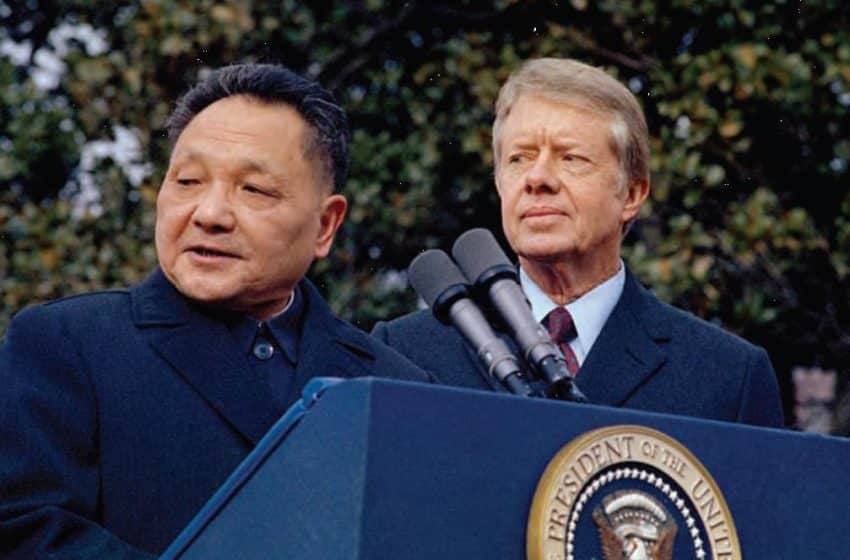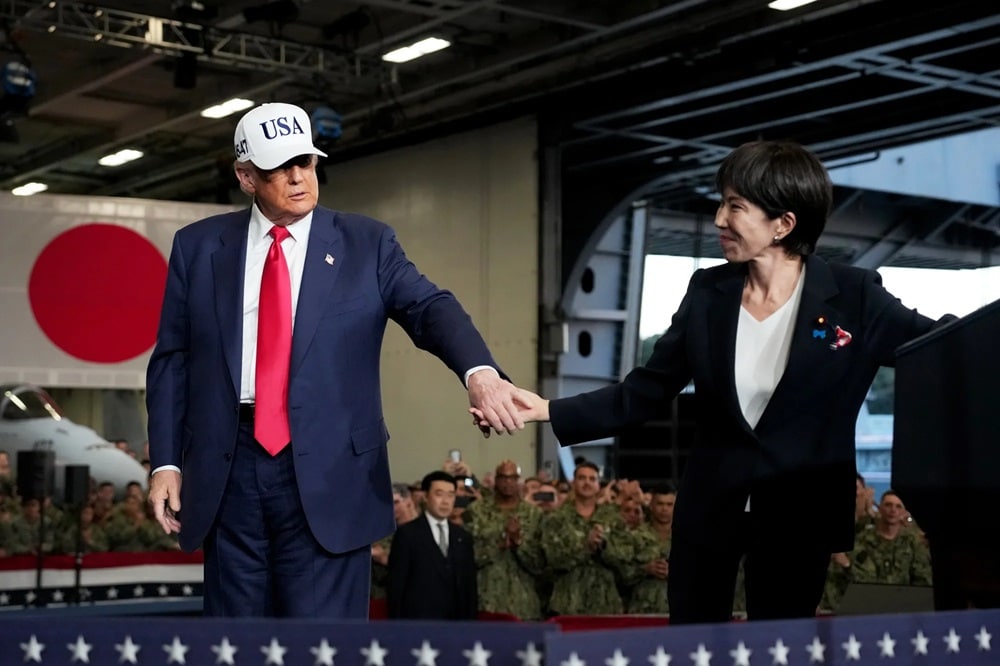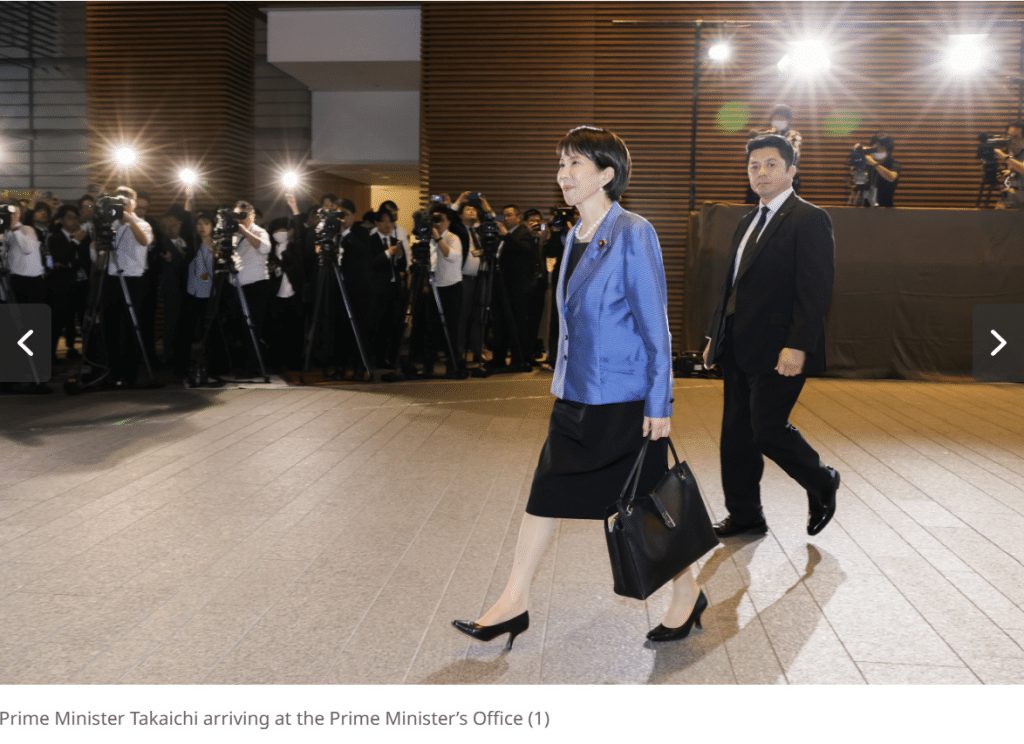Green Protectionism: A Dangerous Consensus—2023 China Focus Essay The Jimmy Carter First Prize Winner
- Analysis
 Graham Revare
Graham Revare- 08/14/2023
- 1
One of the two 2023 China Focus Essay Contest winners is Graham Revare, a third-year undergraduate student at the University of Kansas. He is a member of the debate team studying political science, and his research interests include US-China relations, arms control, and strategic stability. China Focus partnered with the Carter Institute and the 1990 Institute to offer each winner $2000. Congratulations, Graham!
The essay topic for the U.S.-China green technology is as follows:
Topic 2: China and the U.S. share an interest in carbon reduction. Yet both China and the U.S. are now following policies that discriminate against the other’s “green industries.” Are there changes in domestic renewable energy policies which can contribute positively to U.S.-China cooperation and which will result in global carbon reduction?
Sino-American hostility is metastasizing into renewable energy markets. This is bad news for global prosperity, and it is worse news for the planet.
American policymakers have become increasingly enamored with green protectionism, a policy paradigm aimed at shielding domestic renewable products from foreign—particularly Chinese—competition. Despite its stated climate ambitions, the Biden administration has quietly embraced its predecessor’s solar safeguard tariffs and import quotas. The Inflation Reduction Act, its flagship legislative accomplishment, passed sweeping electric vehicle (EV) subsidies and tax credits—but conditioned them on locally-produced components. In his remarks on an executive order promoting the domestic mining and processing of rare earth elements, Biden said: “China has spent years cornering the market … That’s why I committed us to build a clean energy supply chain stamped ‘Made in America.’”
The desire to onshore the renewable supply chain has also taken root in a growingly hawkish Congress, where a bipartisan coalition of lawmakers is moving to reimpose tariffs of up to 254% on four Southeast Asian countries. Their aim is to stop “tariff-jumping” by Chinese manufacturers, many of which have relocated to Cambodia, Malaysia, Thailand, and Vietnam. Together, these countries account for 80% of US solar imports.
Congress’s eye-watering tariff hike, which could muster a veto-proof supermajority, demonstrates the growing danger of green protectionism: policymakers could become so engrossed in great-power competition that they throttle clean energy adoption at home.
Green protectionism is as dangerous as it is pervasive. Taxes on Chinese renewable imports drive up the cost of clean energy, provoke retaliation, and prolong the US’s dependence on fossil fuels. The American government should substantially reduce its tariffs on foreign-produced solar and wind components, including those that are subsidized. A smarter doctrine for green policy—what I term “comparative advantage plus”—would accentuate the American economy’s strengths rather than compensate for its weaknesses. Instead of attempting to squeeze the entire renewable supply chain into the United States, policymakers should subsidize areas where it enjoys a structurally favorable position, such as research and development (R&D).
THE ORIGIN OF RENEWABLE ENERGY TARIFFS
American green protectionism began brewing when US solar manufacturers accused China of product dumping — selling its products at below-market prices to drive out competition. As early as the 2010s, commentators attributed inexpensive Chinese renewables to a government-led campaign of aggressive currency manipulation and illegal subsidization aimed at undercutting American exporters. The Obama administration addressed these complaints in 2012 by launching an investigation into unfair Chinese trade practices and slapping preliminary tariffs on Chinese solar cells and panels. Two years later, the administration solidified these into permanent countervailing and antidumping tariffs and extended them to Taiwan.
The trade-skeptical Trump administration entrenched this approach. In 2018, US officials imposed additional safeguard tariffs and import quotas on most foreign-made solar panels. The Biden administration extended both, though it made some exemptions and pledged to small rate reductions each year.
Renewable protectionism has been accentuated by the rise of a broader hawkish consensus on China across administrations. Suspicion toward the PRC, stoked by its rapid military modernization and regional assertiveness, has become ubiquitous in US foreign policy circles. Lawmakers increasingly view international politics in zero-sum terms, framing Sino-American competition as an existential struggle between democracy and autocracy. National security officials fear China could weaponize the West’s dependence on its energy supplies to extract concessions or break American resolve in a crisis.
In an era of emerging great-power rivalry, Chinese green energy has become radioactive. Joint ventures between US and Chinese firms to build manufacturing plants in America now incite broad backlash from local and national officials. The Chinese EV battery firm Gotion, for example, faced allegations that its proposed factory in Michigan would “spread Communism, bring in thousands of Chinese workers and hide ballistic missiles.”
It’s no wonder that tariffs are in vogue. When you’re hammering out foreign influence, Chinese joint ventures look like a nail.
AGAINST GREEN PROTECTIONISM
There are many compelling reasons to reject green protectionism. First, it endangers the domestic transition to clean energy. The rise of globalized supply chains has enabled nations to specialize, aggregating the strengths of each participant. The US, with its impressive reserves of human capital and cutting-edge research institutions, can supply transnational firms with innovations and product testing. China, on the other hand, wields a comparative advantage in manufacturing renewable products. It enjoys vast natural resources, a deep and flexible labor pool, and a sprawling mass production infrastructure. Connecting these advantages through global supply chains has led to dramatic cost reductions. Open access to China’s economic infrastructure is thus indispensable to a low-carbon future. Tariffs, however, are one reason the US has some of the highest solar costs in the world.
The scale of national electrification required to meet the Biden administration’s Nationally Determined Contribution (NDC), which pledged to halve US carbon emissions from their 2005 levels, is staggering. The US needs to multiply its current rate of renewables installation several times over, which will demand a Herculean effort of ambitious grid build-outs and renewable energy installations.
Cost reductions are the key to rapid decarbonization. Scaling up renewables demands vast sums of private financing to cover the up-front cost of constructing new energy infrastructure. The lower the cost, the quicker renewable energy ventures can turn a profit — and the more investors they attract. This drives a virtuous cycle whereby rising supply enables green manufacturers to tap into economies of scale, driving further cost reductions.
Conversely, these projects are unlikely to attract investors if they can’t underprice incumbent fossil fuels. Higher prices mean a sluggish transition, and slowing the race to renewable energy risks locking in climate catastrophe.
In the worst-case scenario, a tit-for-tat cycle of punitive trade barriers culminates in strict protectionist green energy policies. The renewable energy supply chain then bifurcates into isolated blocs, sundering the global financial network that has achieved dramatic cost reductions in renewable energy. Prices skyrocket, and import-reliant firms sink into insolvency. It is no exaggeration to say that decoupling could eat the renewable transition alive.
This dovetails to a second concern with green trade barriers: retaliation. Blowback from foreign import restrictions often means policymakers will undermine one subindustry as they prop up another. China responded to the 2012 antidumping tariffs, for example, with devastating taxes on American polysilicon, causing the industry to whither. China then scaled up its own production of polysilicon. The US share of the global polysilicon market plummeted from 24% to 5%, and China’s skyrocketed from a marginal share to 70%.
New tariffs could push Chinese officials toward stringent export controls on solar ingot and wafer manufacturing technology, undermining American producers. Retaliatory tariffs will likely target areas in the global supply chain where America wields a genuine comparative advantage. In other words, green protectionism will sabotage the US’s most productive and successful firms. It is analogous to, in the words of the old saying, drinking poison and expecting the other person to die.
The US needs its firms to dedicate their attention and finances to uncovering cutting-edge innovations and installing enormous amounts of renewables. Green protectionism, however, presents a final concern: rent-seeking. Sheltered industries tend to develop an appetite for government protection, and they begin to sink substantial resources into prolonging it. This is rational behavior in an insulated marketplace, where firms can collect enormous unearned profits while producing much less efficiently than their competitors.
Firms are likely to aggressively lobby the government for further protections, and lobbying is a costly endeavor. Rent-seeking businesses dedicate building space, money, and employees toward beguiling government officials. If protected industries depend on tariffs for their very survival, which is likely in an onshoring scenario, lobbying-related expenses may account for a startling share of their expenditures. R&D and other productivity-enhancing measures would suffer as a result.
Finally, empirical evidence suggests tariffs are ineffective at shielding domestic industries. Despite generous protection, cell manufacturers Suniva and Panasonic folded in 2017 and 2020, respectively. High entry costs will make manufacturers difficult to resuscitate without substantial tariff hikes, and that is a perilous approach. Raising the prices of imports is a Band-Aid solution to a structural problem: subsidized or not, foreign manufacturers are likely to underprice American manufacturers. The US has high labor costs and a shallower pool of available workers. There is nothing wrong with acknowledging the intrinsic disadvantage US producers face vis-à-vis foreign firms. Accepting the principle of comparative advantage is what makes countries rich.
There is thus little reason to believe that the US should use trade restrictions to prop up otherwise non-competitive green industries. Firms weaned on local content requirements and tariffs are unlikely to flourish. Instead, they will acquire bloat, soak up vast public resources, and obstruct the fight against climate change.
A NEW PATH FORWARD: COMPARATIVE ADVANTAGE PLUS
The climate crisis demands a policy strategy beyond green autarky. The most compelling path forward is “comparative advantage plus.” The US government should rebuff green protectionism and slash tariffs and import duties on renewable energy, including both end-use products and intermediate components. Instead, policymakers should turn their attention to supporting the areas in the renewable supply chain where America commands a comparative advantage. The US should compete with Chinese suppliers, but it needs to pick its battles prudently.
Subsidizing sectors in which the US is already poised to excel may seem counterintuitive; after all, these firms do not need government support to remain competitive. But this is a feature, not a bug, of comparative advantage plus. Industrial policy should aim to accelerate decarbonization, not shelter national champions. These firms will benefit from subsidies but remain exposed to foreign competition, encouraging them to remain on the cutting edge of green technology.
The best opportunity for an expanded US commitment is knowledge-intensive R&D. Here, the government should vigorously deploy the toolbox of a green industrial policy: tax credits, low-interest loans, public purchases, and subsidies. There are a range of nascent technologies that have not yet reached cost-feasibility and would benefit from enhanced support, including low-carbon steel, direct air capture, hydrogen energy, and Advanced Small Modular Reactors. The US should step up its public funding of promising research ventures, increasing the resources available for costly projects. It could commit to purchasing the most promising technologies when they begin production, which would provide certainty to investors in a high-risk marketplace. American innovators could then forge symbiotic partnerships with Chinese manufacturers to bring their technologies to market, maximizing the efficiency of the supply chain.
The US should continue providing generous support to renewable installation and maintenance projects. As observers have noted, solar installation is likely to generate significantly more jobs than manufacturing. Lowering the costs of renewable energy imports will increase uptake, offsetting the loss of factory jobs.
Fears of the security risks of this policy approach are overblown. Clean energy is a far less effective tool of coercion because, unlike fossil fuels, the manufacturer has no leverage over already installed capacity. Oil and gas require a continual stream of resources; the supplier can turn off the tap at any time. Renewable energy provides no such continuous leverage. China could threaten to cut off rare earth elements used for maintenance, but recycling, substitutes, and increasing extraction make it difficult to turn individual minerals into meaningful chokepoints.
The US is already dependent on China for, among other things, pharmaceuticals, credit, and many of its basic consumer goods. China is also profoundly reliant on the US as a destination market and a source of sovereign bonds. Unless policymakers are prepared to disentangle the US and Chinese economies entirely, mutual economic vulnerability will persist. Analysts should also weigh the dependence concern against the alternative: continuing to pad the treasuries of aggressive petrostates.
In an age of reshoring, high fences, and inward-facing populism, American policy would benefit from a healthy dose of globalism. There is a bipartisan convergence on the need to throw up walls against Chinese goods and stimulate domestic clean energy. This expression of “green protectionism” is oxymoronic self-sabotage. It will bottleneck the renewable energy economy and stymie US progress against climate change. America needs a green industrial policy tailored to its strengths. This proposal would capitalize on the US’s advantage in experimentation and innovation, and accelerate the urgent transition from carbon-intensive energy.
China is poised to pick up part of the tab for global decarbonization. American lawmakers should not become so immersed in hard-nosed competition that they snub this offer.








1 Comment
[…] Green Protectionism: A Dangerous Consensus—2023 China Focus Essay The Jimmy Carter First Prize Winner […]